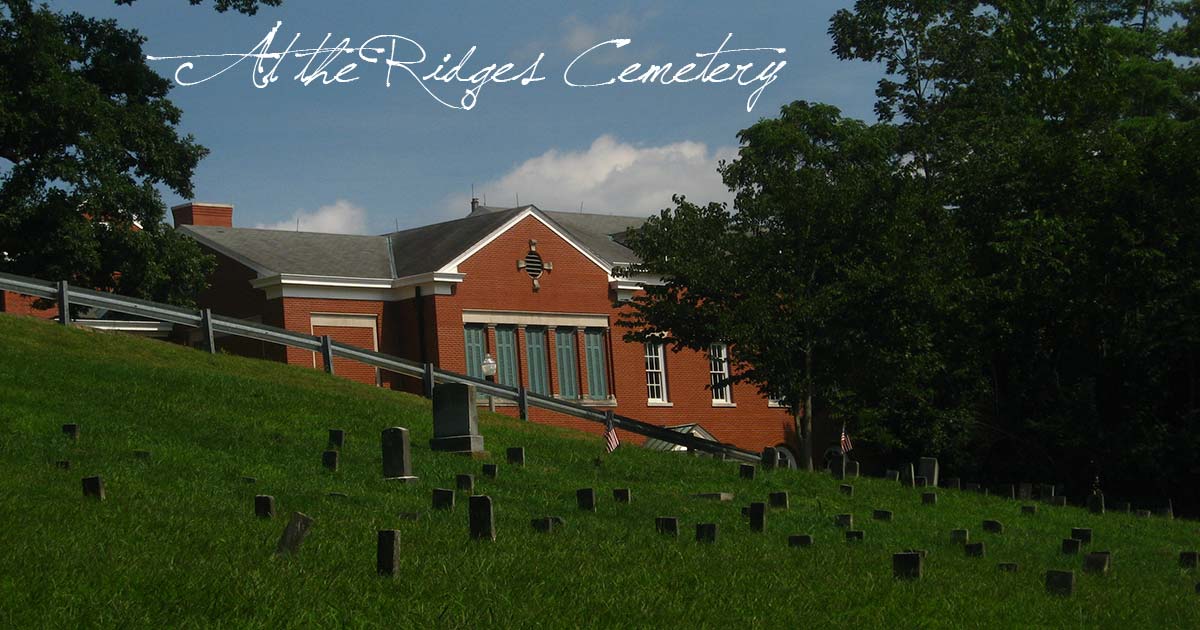At the Ridges Cemetery

A good friend used to work at Ohio University. A few years ago, when I came down for a visit, she mentioned that the university owned a building and property called The Ridges, a former insane asylum. The building itself had been turned into an art gallery, and a series of walking paths had been added to the grounds. So I spent a lovely afternoon while she worked exploring and reflecting—on death and insanity mostly, I suppose. On the humanity of the inmates.
One gallery featured the art of a Turkish artist named Burhan Dogançay. You can see some of his art here, but the easy description is that his paintings were as if you had peeled through layers of paint until you finally saw the source. Layer upon layer upon layer, burying something horrific or beautiful. I wrote this:
It is here, in the gallery of Turkish artist Burhan Doganczky, that I begin to understand: Man is but a layer of paint, one on top of the other—each instant a new picture, one on top of the next. How appropriate it is that in an art gallery which once housed an insane asylum, I can see it most clearly: that nothing, no matter how much you cover it, can ever really go away—nor can it remain unchanged. Only the new can disappear.
The next gallery contained a collection of indigenous blankets from the southwest. One common pattern, probably most visible in the seventh-to-last photo here (40 of 46 images), is that of the female hair bun; I don’t remember all of the text, but I think it pointed out that a lot of modern patterns still included it as a connection to the past. To which I wrote this:
“Our designs are our thinking.” – Irene Clark, Navajo Weaver
Weaving, among the Navajo, often illustrates the connection of thought and female identity. The designs often incorporate the traditional female hairbun—connecting the past to the future, bringing together great, great, great grandmother with her descendents. In tradition they bring together a complexity of thought, a generational tryst that the Y chromosome can never fathom.
Now, both of these thoughts may be a little pretentious (I’m looking at you, Y chromosome line). But this reflection on the relationship between the past and present identity definitely got me in the mood for some serious reflection when I took walks later that afternoon.
Remember: the Ridges was a former asylum. Throughout the grounds were scattered cemeteries. The more modern gravestones (1940s-ish on) included names. In some cases the caretakers had added personal information fairly recently, as well as doing things like marking veterans’ graves with flags (making it easy to imagine that gravestone 73, aka Joseph Calhoun, a Civil War veteran, had been sent there due to complex PTSD from the war). But the majority were only marked with numbers.
At some point I found a bench by a creek, tombstones all around, and mourned for them. Mourned for the layer upon layer that had been painted over complex trauma or misunderstood mental illness instead of addressing the wounds at the heart. Mourned that so many residents could not connect their past and future. And I wrote today’s poem.
At the Ridges Cemetery
Originally written August 2, 2013
The broken, jagged, teeth of tombs,
Most with numbers, not with names
Are whispering your tragedies
The minds, shell-shocked from Civil Wars
The simpletons with puppy smiles
The vulnerable, the very old
And could you understand the rains?
The buzzing of the dragonfly?
I think the bullfrogs speak your names
I think they echo back your cries
And promise—we have learned from you
(though we’ve forgotten who you were)
Once, you were flesh and blood like we;
And you have simply gone before—
Like most, your dust alone is trace
(in meadows where wild flowers bloom)
But past is covered, not erased—
So wait a while with patient hope
Until again you’re called by name.
